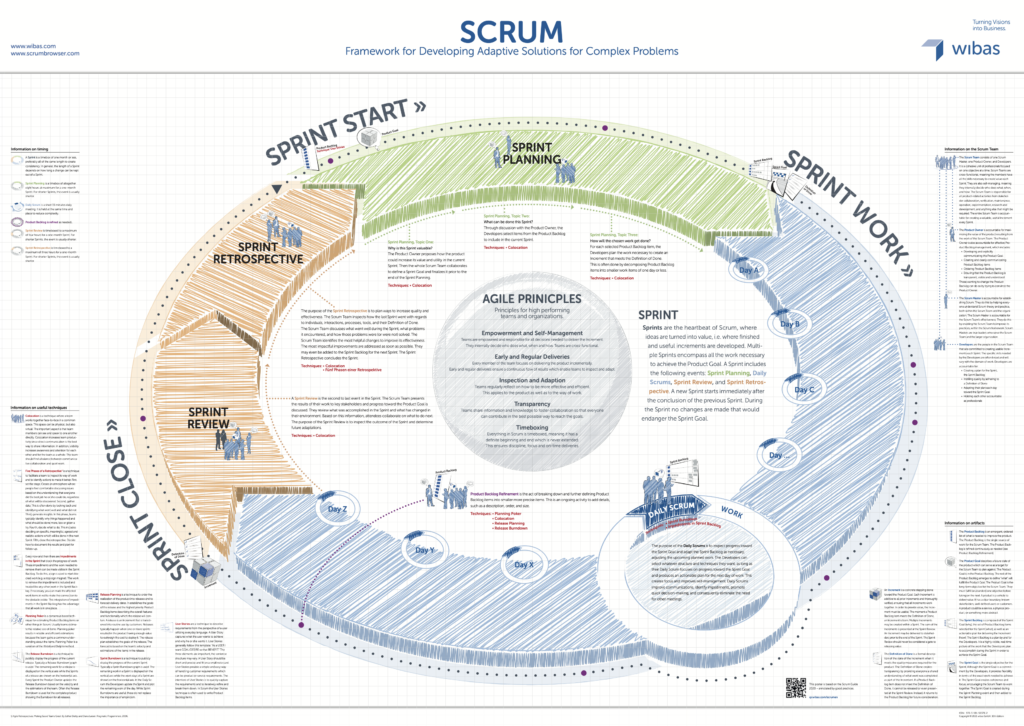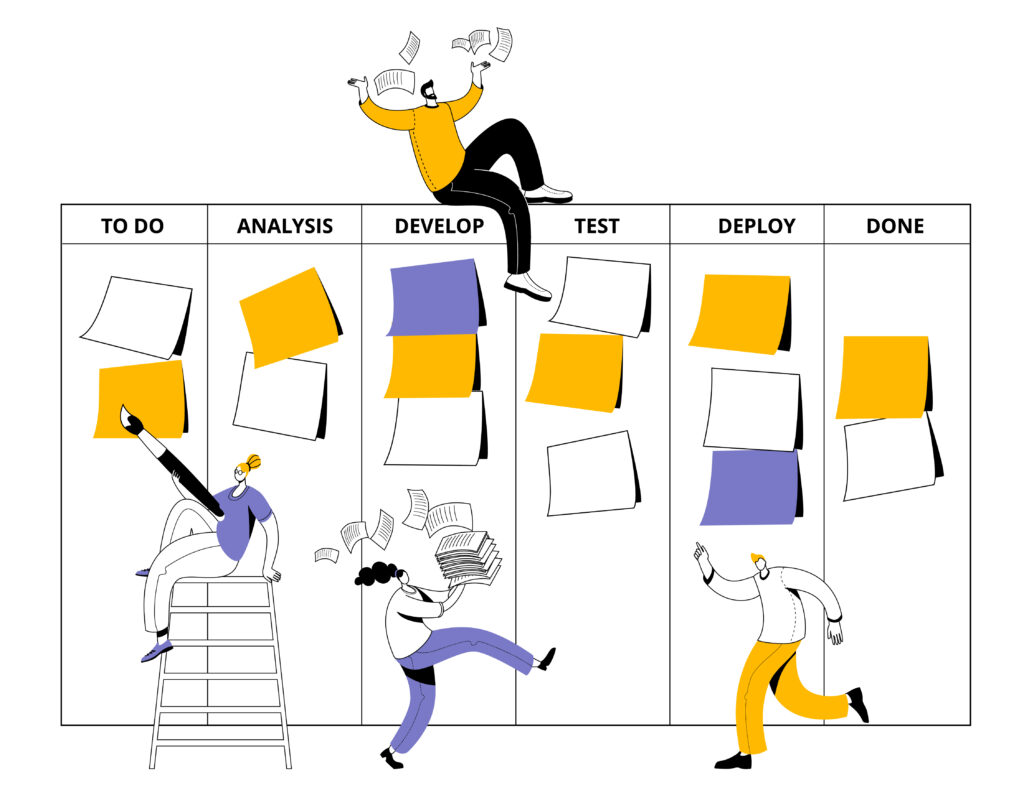Existing Scrum or Scrumban teams can benefit from Kanban. A customer report outside of IT shows how individual aspects of Kanban improve a messy situation.
Recently at the customer
“We’re doing Scrumban.” Of course, it’s not running optimally, otherwise I wouldn’t be here as a coach.
What of Scrum do I find here? The roles of Scrum Master and Product Owner are filled in the controller team. There is a Daily – but without looking at the Kanban Board. I also quickly understand why. It is too full and confusing. 71 cards “in progress”. Another 40 as current weekly target in the column next to it. It’s easier to explain what’s going on in the Daily free and without a board. Retrospectives are about every six months. The sprint length should be one week, because there is a weekly vote on the weekly target. Sprints start – but do not end. Some of what belongs to Scrum I don’t find at all.
What of Kanban do I find? A board. A real Kanban system was obviously not the goal here – none of the practices are applied.
What does Scrum actually do?
Scrum is a framework developed specifically for product development. It is based on the idea that a team works in short iterations called sprints.
Scrum encourages team collaboration and communication with the customer. There are fixed roles such as the Scrum Master and the Product Owner, each with their own responsibilities.
Scrum provides clear structures and rules, which can help keep the team on track and ensure they are focused on the most important tasks.

And what does Kanban?
What everyone knows about Kanban: it is based, among other things, on the idea that work is represented visually. This allows the team to quickly see what needs to be done and what has already been done.
But Kanban is much more than a board. Kanban is a change management method. Kanban has an understanding of evolutionary change, where unnecessary resistance should be avoided – for example by introducing new titles for people and meetings. A good Kanban system first links to the existing situation of the team. Kanban promotes continuous improvement and the constant flow of work.

Reasons for a broken Scrum
Maybe the tasks of the team have changed? The classic is described in the Posit Science Case Study of Kanban University. Here it is reported about a team that initially ran product development, which they managed very well with Scrum. As soon as the product was on the market, urgent needs for rework, special customer requests, operation and maintenance were added – which the development team could no longer coordinate well in parallel to the new development with Scrum. Since this case study is part of the Kanban Management Professional training material, you can guess the solution.
Another reason why Scrum does not fit (anymore): Maybe Scrum was never really the best solution for the team, but was introduced some time ago for reasons of uniformity in the company or because people didn’t know any better. Often we then still find people with the titles “Scrum Master” and “Product Owner”, events are held more irregularly and less and less according to the idea of the Scrum Guide, sprints get out of sync more and more often because the customer, the market, the situation requires it. And maybe you know such a board with confusing piles of requests or in the backlog, and with far too many cards in parallel in work. This situation is often accompanied by the accusation that the team is not completing enough. Does this sound familiar?
And how can Kanban help my Scrum now?
Regardless of whether a team is working according to Scrum or starting with the Kanban methodology, it is helpful to approach it with the STATIK approach and take a fresh look at the situation. STATIK (Systems Thinking Approach to Implementing Kanban) is a framework not only for implementing Kanban in organizations. It can also help to improve your Scrum.
Essential for the beginning is to identify the “sources of dissatisfaction”. They represent the 1st step in STATICS and are to be understood as motivation for resulting change. In this way, you want to target the most important construction site. Then the next most important construction site is tackled. Aha – change principles of Kanban have already crept in. “Start where you are and change in small steps”.
Recently at the customer: Workshop on the Sources of Dissatisfaction
Unsurprisingly, great dissatisfaction with the board emerges as the most important issue. In a simulation, the team experiences the difference from the current situation in the “clogged system” to working in a system with flow, less parallel work, and more getting done. And with more joy in the process.
Through the simulation, the team could experience the direct effect of how working in a system with flow works. This motivated them to directly change their own situation in real life.
Limits for quantities of parallel work are introduced, the Kanban board is tidied up and redesigned over time. Existing rules are made explicit to avoid further misunderstandings.
A process of continuous change begins. Every 2 weeks we briefly talk about the Kanban system in the team – in one of the meetings that existed before. I occasionally call it Flow Review, but the invitation in the calendar is still called the same as before. The Kanban system is stable and the metrics provide good ideas for further improvements.
And a few months later, I ask again about the sources of dissatisfaction.
The answer: the biggest dissatisfaction is now outside the board and is being worked on bit by bit. By the way, there is still a Scrum Master and a Product Owner.
And how can it get better for me now?
You have a Scrum or Scrumban team and some of the problems described here sound familiar?
Take a look at your existing system with STATIK. The findings can improve or challenge your Scrum. If the most important thing to you is that your team is in flow and delivering, hopefully that should be secondary.
Want to help yourself and your team? You will learn the tools in the Kanban System Design Training.
Do you want to become a certified Kanban Management Professional? Then attend the Kanban Systems Improvement Training.
But Kanban can not only help your Scrum. It can also make your SAFe better. Read more in Julia’s article “If you understand Kanban, your SAFe will be better”.